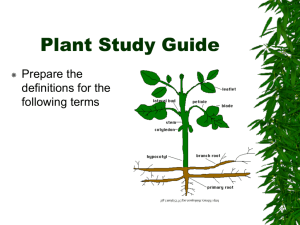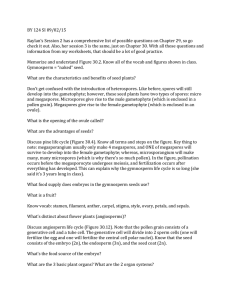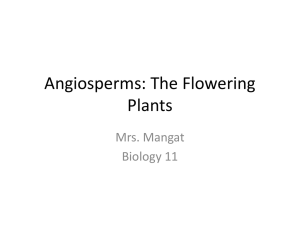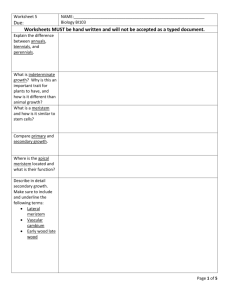Chapter 30 - Plant Diversity II: The Evolution of Seed Plants
advertisement
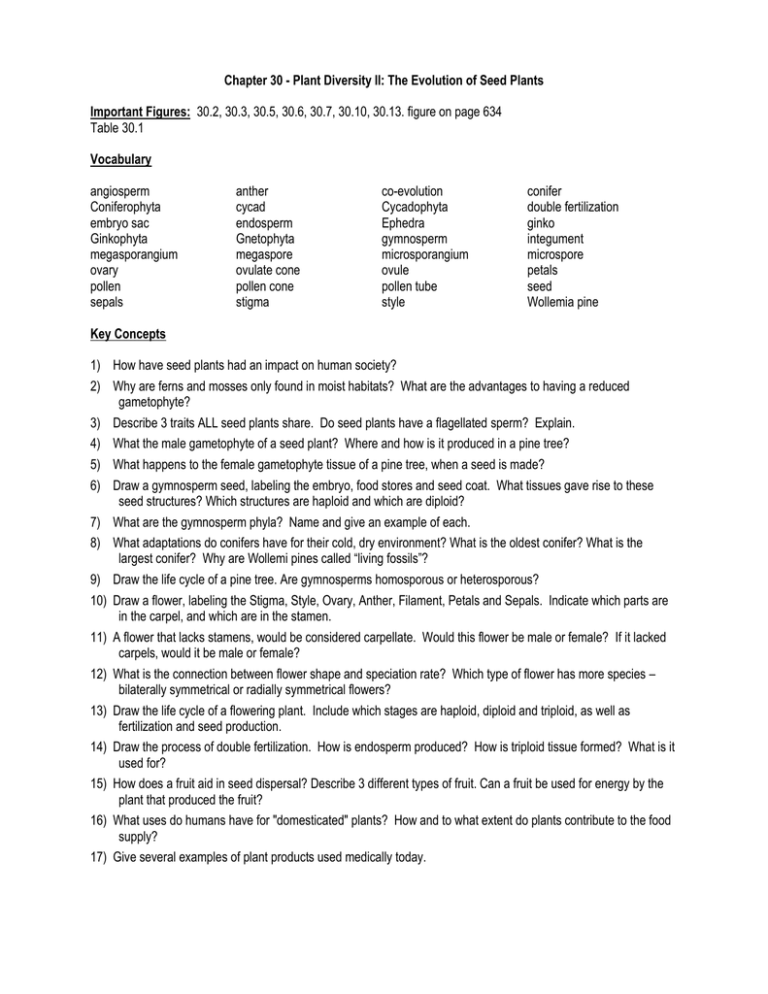
Chapter 30 - Plant Diversity II: The Evolution of Seed Plants Important Figures: 30.2, 30.3, 30.5, 30.6, 30.7, 30.10, 30.13. figure on page 634 Table 30.1 Vocabulary angiosperm Coniferophyta embryo sac Ginkophyta megasporangium ovary pollen sepals anther cycad endosperm Gnetophyta megaspore ovulate cone pollen cone stigma co-evolution Cycadophyta Ephedra gymnosperm microsporangium ovule pollen tube style conifer double fertilization ginko integument microspore petals seed Wollemia pine Key Concepts 1) How have seed plants had an impact on human society? 2) Why are ferns and mosses only found in moist habitats? What are the advantages to having a reduced gametophyte? 3) Describe 3 traits ALL seed plants share. Do seed plants have a flagellated sperm? Explain. 4) What the male gametophyte of a seed plant? Where and how is it produced in a pine tree? 5) What happens to the female gametophyte tissue of a pine tree, when a seed is made? 6) Draw a gymnosperm seed, labeling the embryo, food stores and seed coat. What tissues gave rise to these seed structures? Which structures are haploid and which are diploid? 7) What are the gymnosperm phyla? Name and give an example of each. 8) What adaptations do conifers have for their cold, dry environment? What is the oldest conifer? What is the largest conifer? Why are Wollemi pines called “living fossils”? 9) Draw the life cycle of a pine tree. Are gymnosperms homosporous or heterosporous? 10) Draw a flower, labeling the Stigma, Style, Ovary, Anther, Filament, Petals and Sepals. Indicate which parts are in the carpel, and which are in the stamen. 11) A flower that lacks stamens, would be considered carpellate. Would this flower be male or female? If it lacked carpels, would it be male or female? 12) What is the connection between flower shape and speciation rate? Which type of flower has more species – bilaterally symmetrical or radially symmetrical flowers? 13) Draw the life cycle of a flowering plant. Include which stages are haploid, diploid and triploid, as well as fertilization and seed production. 14) Draw the process of double fertilization. How is endosperm produced? How is triploid tissue formed? What is it used for? 15) How does a fruit aid in seed dispersal? Describe 3 different types of fruit. Can a fruit be used for energy by the plant that produced the fruit? 16) What uses do humans have for "domesticated" plants? How and to what extent do plants contribute to the food supply? 17) Give several examples of plant products used medically today.
